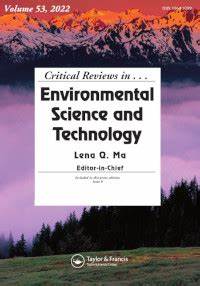Pretreatments of lignocellulosic biomass for biohydrogen biorefinery: Recent progress, techno-economic feasibility and prospectives
IF 13.2
1区 环境科学与生态学
Q1 ENVIRONMENTAL SCIENCES
Critical Reviews in Environmental Science and Technology
Pub Date : 2025-07-18
DOI:10.1080/10643389.2025.2484892
引用次数: 0
Abstract
Dark fermentation (DF) of lignocellulosic biomass (LB) is expected to play a critical role in building a green hydrogen supply chain toward the carbon-neutral society. Due to its inherent recalcitrance, biomass demands pretreatment to increase its digestibility. Various pretreatment techniques have been extensively investigated to improve the digestibility of feedstocks. However, no systematic review of pretreatment to promote biohydrogen fermentation has been conducted. Besides, studies analyzing the economic feasibility of pretreatment technologies are lacking. The aim of this review is to analyze the current pretreatment techniques and research results based on different driving forces. Intense thermochemical pretreatment dissolves lignin and hemicellulose and forms various inhibitors that interfere with the physiological and metabolic functions of the microbiota. Moreover, the issues related to the detoxification methods of inhibitors and their impacts on biomass fermentation were highlighted. The possibility of bioaugmentation of hydrogen-producing microflora with genetically engineered or naturally resistant bacteria may serve to be an effective in situ detoxification protocol. Moreover, the recycling techniques related to pretreatment were also discussed. Black liquor is a huge carbon reservoir with great potential to produce products such as biohydrogen and the value-added products generated will help reduce the environmental degradation caused by black liquor. Furthermore, the technical and economic viability of the current pretreatment methods and the prospects were also discussed. Increased costs related with buffering, reduced productivity and energy efficacy are critical factors contributing to the costs of bio-H2 production. For every 20% increase in H2 yield, production costs are decreased by 8%.木质纤维素生物质用于生物制氢的预处理:最新进展、技术经济可行性和前景
木质纤维素生物质(LB)的暗发酵(DF)有望在构建面向碳中和社会的绿色氢供应链中发挥关键作用。由于其固有的顽固性,生物质需要预处理以提高其消化率。各种预处理技术已被广泛研究,以提高原料的消化率。然而,目前还没有对预处理促进生物氢发酵进行系统的综述。此外,对预处理技术的经济可行性分析研究较少。本文旨在分析当前的预处理技术和基于不同驱动力的研究结果。强烈的热化学预处理溶解木质素和半纤维素,并形成各种抑制剂,干扰微生物群的生理和代谢功能。重点介绍了抑制剂解毒方法及其对生物质发酵的影响。利用基因工程或天然耐药细菌生物增强产氢微生物群的可能性可能是一种有效的原位解毒方案。并对预处理相关的回收技术进行了探讨。黑液是一个巨大的碳库,具有生产生物氢等产品的巨大潜力,其产生的增值产品有助于减少黑液对环境的破坏。并对现有预处理方法的技术经济可行性及前景进行了讨论。与缓冲相关的成本增加,生产力和能源效率的降低是影响生物h2生产成本的关键因素。氢气产量每增加20%,生产成本就会降低8%。
本文章由计算机程序翻译,如有差异,请以英文原文为准。
求助全文
约1分钟内获得全文
求助全文
来源期刊
CiteScore
27.30
自引率
1.60%
发文量
64
审稿时长
2 months
期刊介绍:
Two of the most pressing global challenges of our era involve understanding and addressing the multitude of environmental problems we face. In order to tackle them effectively, it is essential to devise logical strategies and methods for their control. Critical Reviews in Environmental Science and Technology serves as a valuable international platform for the comprehensive assessment of current knowledge across a wide range of environmental science topics.
Environmental science is a field that encompasses the intricate and fluid interactions between various scientific disciplines. These include earth and agricultural sciences, chemistry, biology, medicine, and engineering. Furthermore, new disciplines such as environmental toxicology and risk assessment have emerged in response to the increasing complexity of environmental challenges.
The purpose of Critical Reviews in Environmental Science and Technology is to provide a space for critical analysis and evaluation of existing knowledge in environmental science. By doing so, it encourages the advancement of our understanding and the development of effective solutions. This journal plays a crucial role in fostering international cooperation and collaboration in addressing the pressing environmental issues of our time.

 求助内容:
求助内容: 应助结果提醒方式:
应助结果提醒方式:


